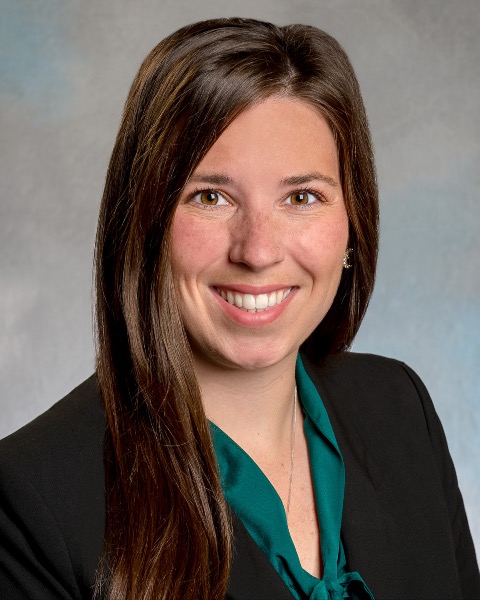Poster
Knowledge of and Strategies to Mitigate Perceived Risk in Pharmacy Practice

Rachel E. Barenie, PharmD, JD, MPH
Assistant Director of Continuing Professional Development
University of Tennessee Health Science Center College of Pharmacy- SM
Sydni Metzmeier, B.S.
Student Pharmacist
UTHSC College of Pharmacy - KR
Kelly C. Rogers, Pharm.D., BCCP, FCCP, FACC
Professor of Clinical Pharmacy and Translational Science
University of Tennessee College of Pharmacy
Primary Presenter(s)
Co-Presenter(s)
Author(s)
The practice of pharmacy is highly regulated in the United States and is changing rapidly, with pharmacists taking on more responsibilities. This is important in light of increasing costs to defend claims both in a lawsuit and the Board of Pharmacy. In 2018, the average cost of a closed claim against a pharmacist was $124,407, which is a 23% increase from 2013. With more responsibilities come more risk, and pharmacists must take steps to mitigate their known and unknown risk. Risk is defined as the combination of the probability of occurrence of harm and the severity of that harm. Educating pharmacists on their risk and strategies to mitigate it is an important gap that continuing professional development efforts may narrow. Limited data exists exploring how practicing pharmacists perceive the level of risk their practice exposes them to or how they can mitigate that risk. We aimed to assess the level of risk practicing pharmacists perceive they are exposed to and strategies employed to mitigate that risk by surveying practicing pharmacists.
Educational Strategy: We distributed a survey to all faculty who are also practicing pharmacists at the University of Tennessee Health Science Center (UTHSC) College of Pharmacy and all subscribers to the UTHSC COP Office of Continuing Professional Development listserv. The survey consisted of 17 close-ended questions probing about pharmacists demographics, perceived risk at pharmacy practice site, and other questions about professional liability insurance. Only practicing pharmacists were eligible to participate in the survey. “Practicing pharmacist” included any licensed pharmacist who has or had a practice site in the past 24 months or any pharmacist who has engaged in the practice of pharmacy in the past 24 months (i.e., preceptor of students at a vaccine clinic, volunteer at a clinic, etc). The survey took approximately 20 minutes to complete. Participants who completed the survey were entered into a raffle to win 1 of 5 $50 Amazon gift cards. We followed the Dilman approach to improve survey response rates. Descriptive statistics were used to summarize the data. The University of Tennessee Institutional Review Board approved this study.
This study is important because it is working to generate the data needed to develop evidence-based educational initiatives to solve healthcare problems, which one notable and growing problem being mitigating known risk or liability.
Patient-Level Outcome(s) Measured: A total of 558 practicing pharmacists participated in the survey (response rate=7%). Many pharmacists reported earning a Pharm.D. as their terminal degree (n=346, 66%), primarily practicing in Tennessee (n=224, 43%), and in a community pharmacy setting (n=241, 39%). Pharmacists were asked about the level of risk they perceived their practice site exposes them too, and 7% reported no risk (n=39), 44% reported limited risk (n=224), 39% reported moderate risk (n=197), 8% reported high risk (n=42), and 1% reported unknown risk (n=7). Many pharmacists reported that their practice site provides them professional liability insurance (n=236, 46%), and most reported having their own professional liability policy in addition to their employer (n=303, 60%). Of those with their own policy, 115 (37%) reported their professional liability cost between $100-$150 with 256 (82%) stating that they have obtained a copy of their professional liability insurance, but fewer (n=189, 61%) reported actually reading the policy.
Approximately 1 in 3 pharmacists participants reported not having their own professional liability insurance policy. Considering the tremendous amount of pharmacy regulation that exists coupled with expanded scopes of practice, pharmacists must proactively mitigate the risk they are exposed to, commonly with professional liability insurance. Whether continuing professional development opportunities focused on mitigating pharmacists’ risk should be required for licensure renewal should be further evaluated.
Learning Objectives:
- To describe pharmacists' knowledge of perceived risk their pharmacy practice site exposes them to.
- To list strategies pharmacists use to mitigate perceived risk in pharmacy practice.
- To discuss opportunities to design evidence-based continuing education centered on managing risk in healthcare.
